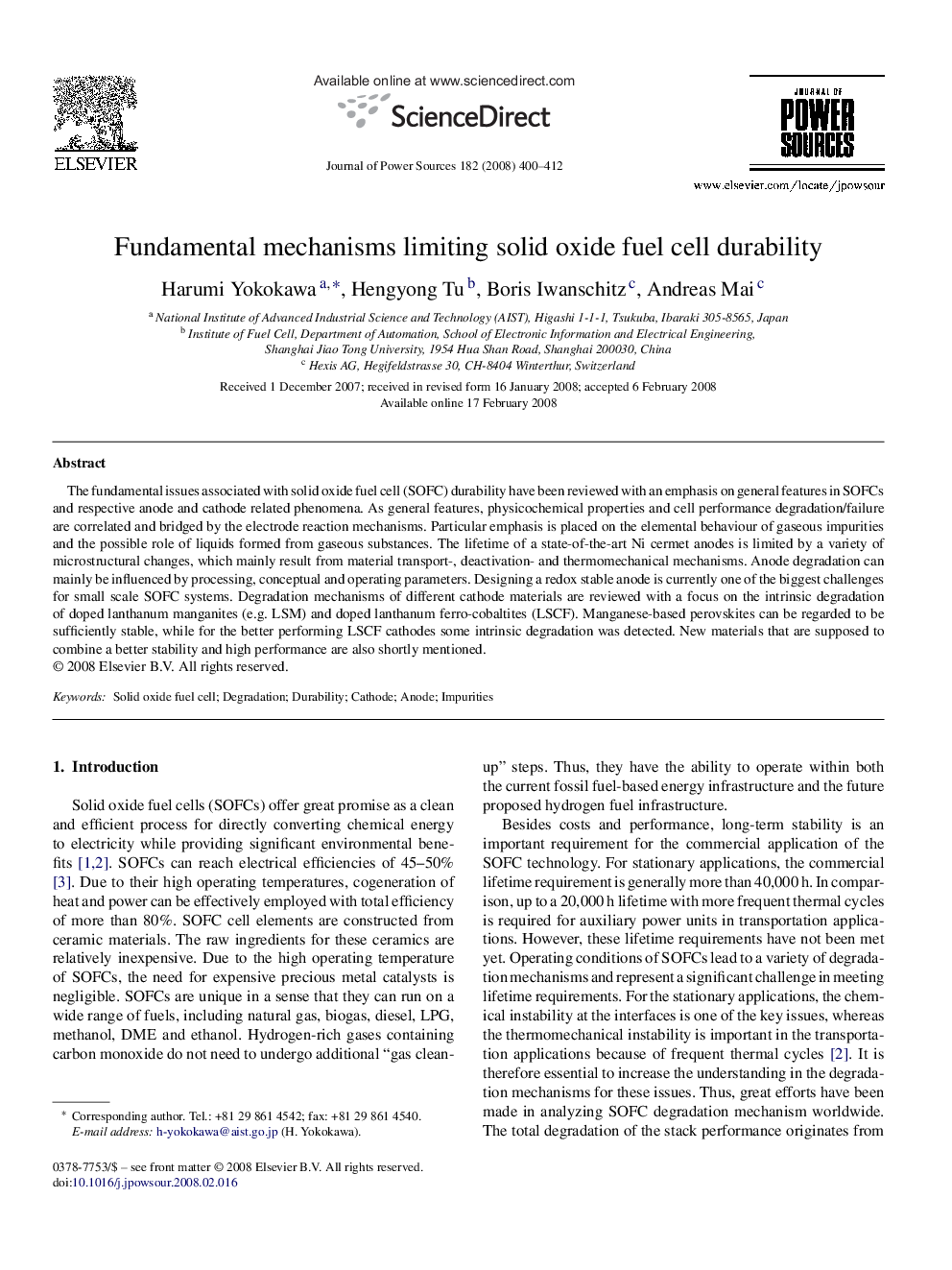| Article ID | Journal | Published Year | Pages | File Type |
|---|---|---|---|---|
| 1290021 | Journal of Power Sources | 2008 | 13 Pages |
The fundamental issues associated with solid oxide fuel cell (SOFC) durability have been reviewed with an emphasis on general features in SOFCs and respective anode and cathode related phenomena. As general features, physicochemical properties and cell performance degradation/failure are correlated and bridged by the electrode reaction mechanisms. Particular emphasis is placed on the elemental behaviour of gaseous impurities and the possible role of liquids formed from gaseous substances. The lifetime of a state-of-the-art Ni cermet anodes is limited by a variety of microstructural changes, which mainly result from material transport-, deactivation- and thermomechanical mechanisms. Anode degradation can mainly be influenced by processing, conceptual and operating parameters. Designing a redox stable anode is currently one of the biggest challenges for small scale SOFC systems. Degradation mechanisms of different cathode materials are reviewed with a focus on the intrinsic degradation of doped lanthanum manganites (e.g. LSM) and doped lanthanum ferro-cobaltites (LSCF). Manganese-based perovskites can be regarded to be sufficiently stable, while for the better performing LSCF cathodes some intrinsic degradation was detected. New materials that are supposed to combine a better stability and high performance are also shortly mentioned.
